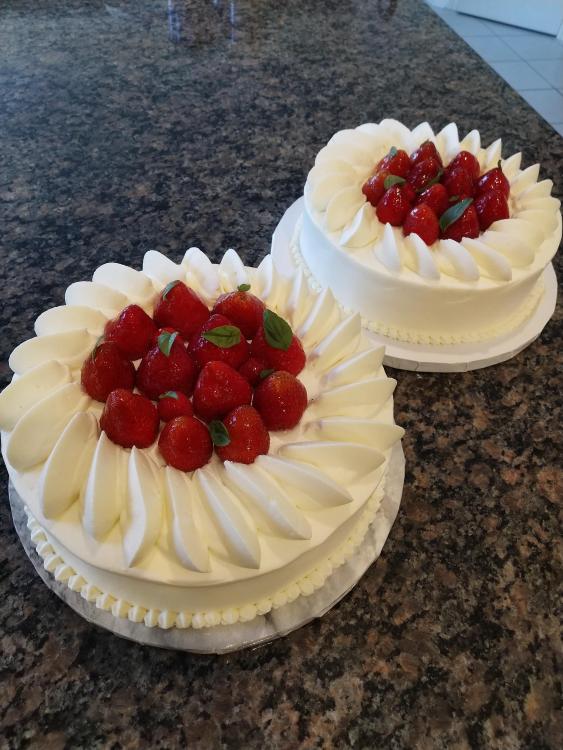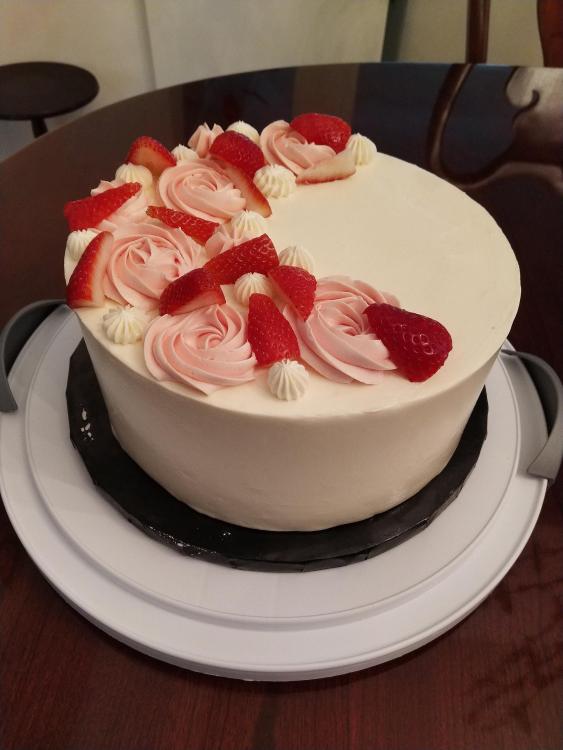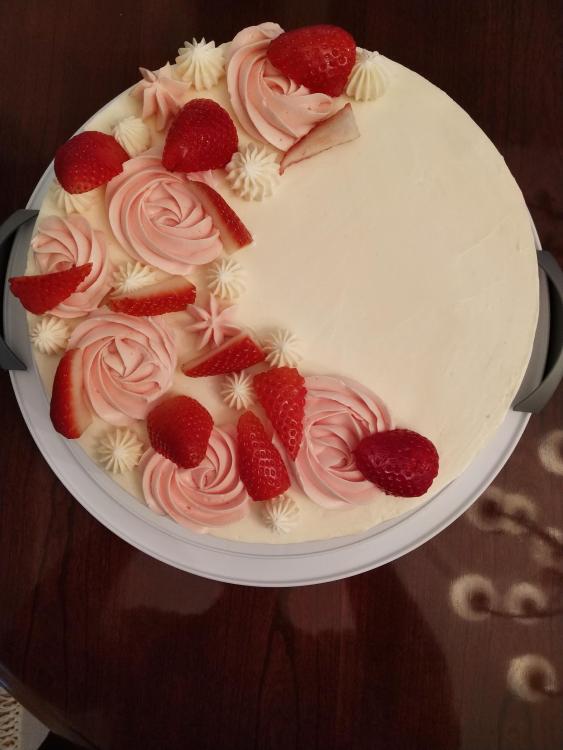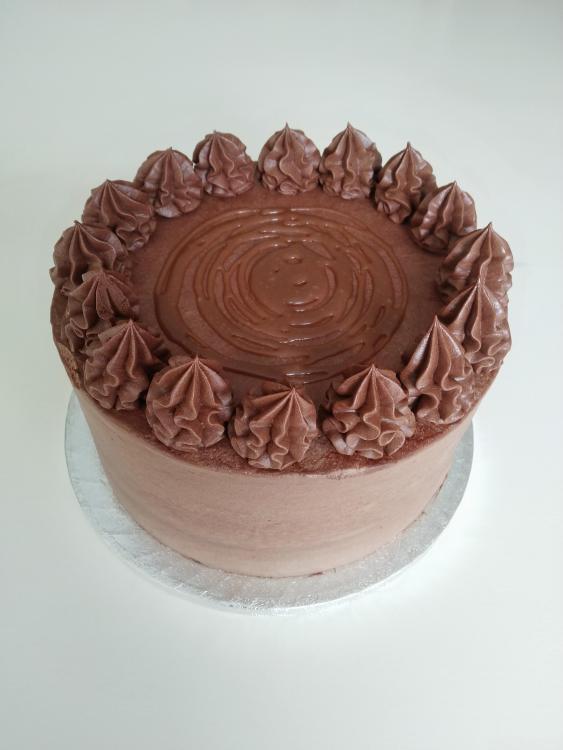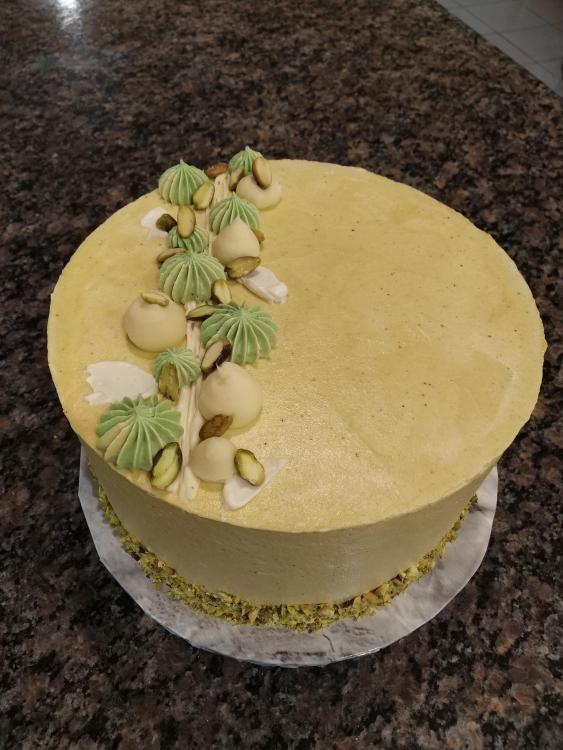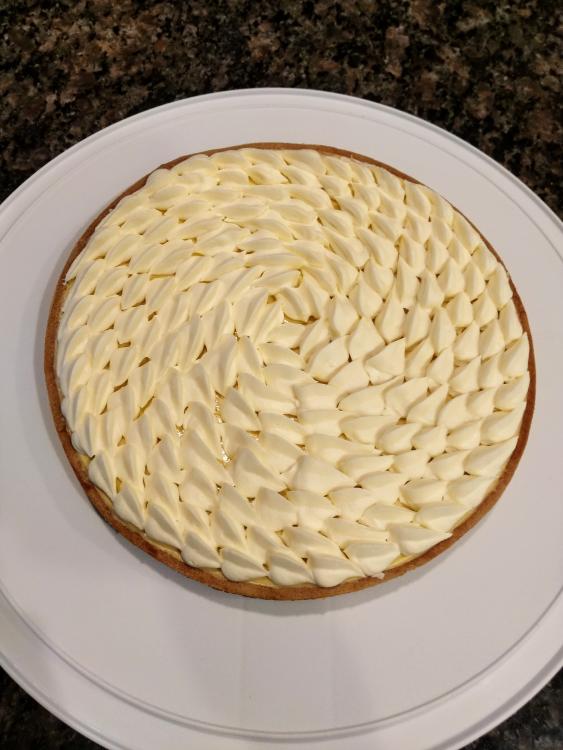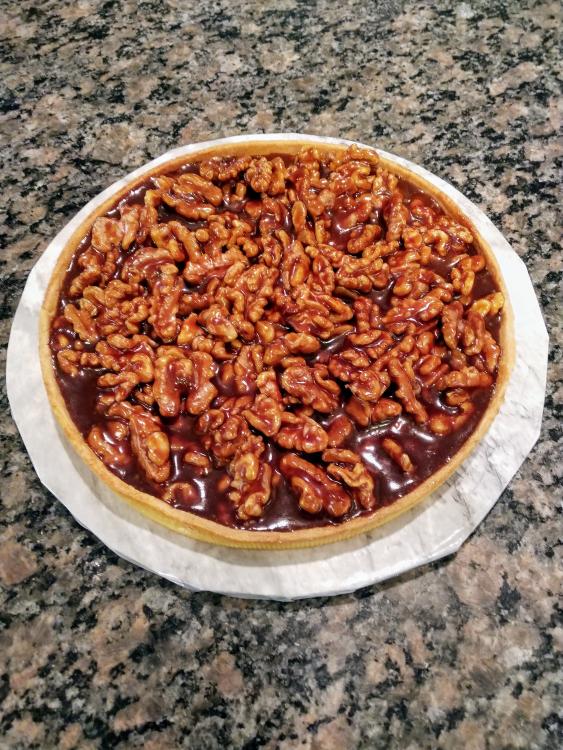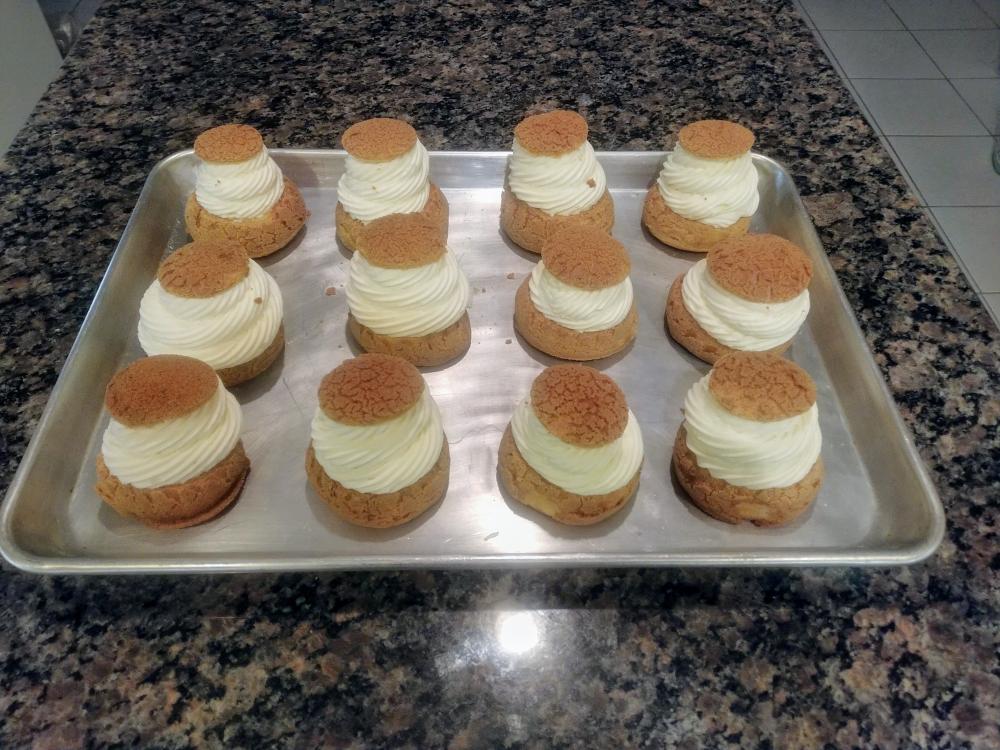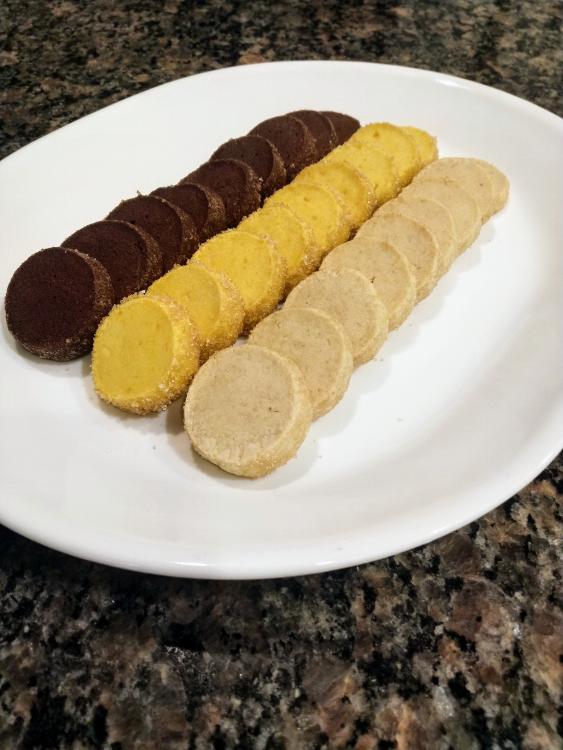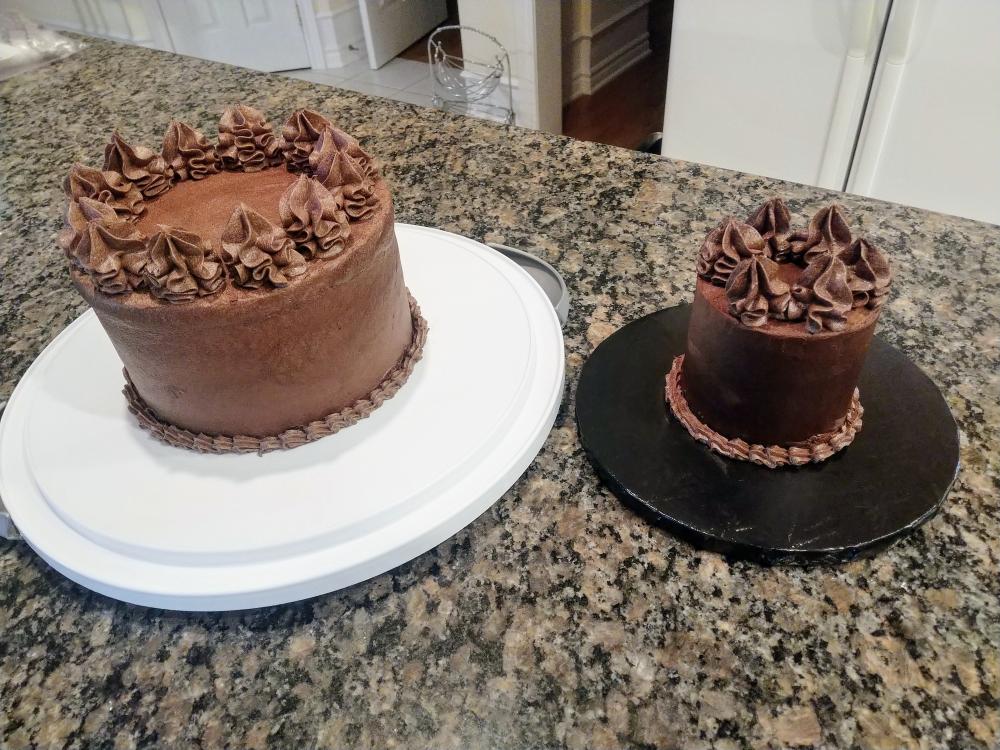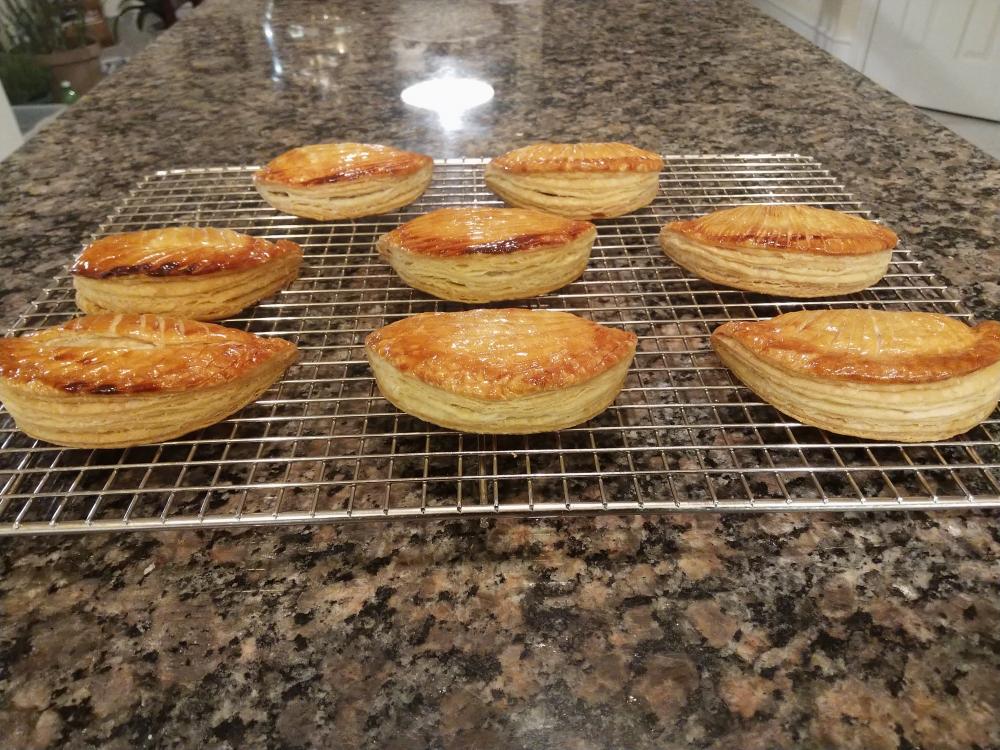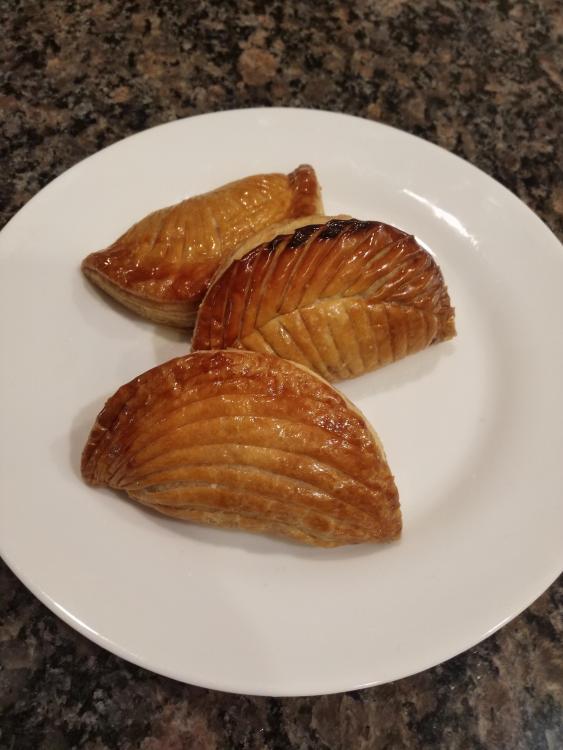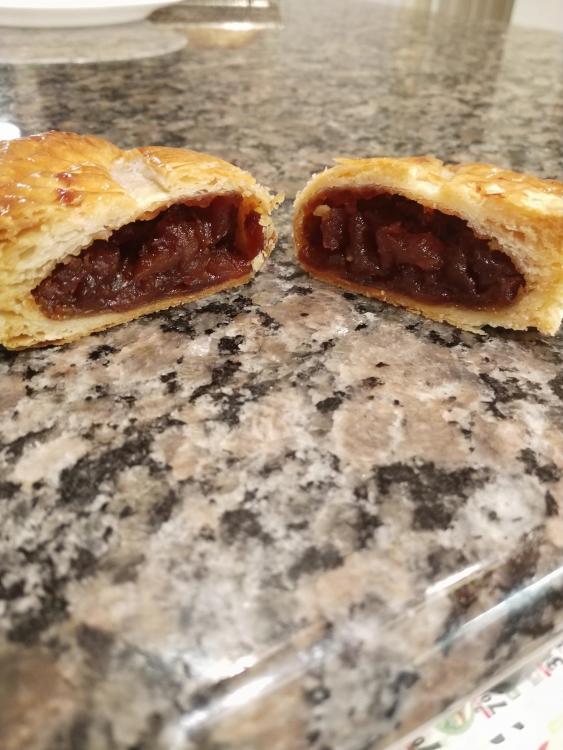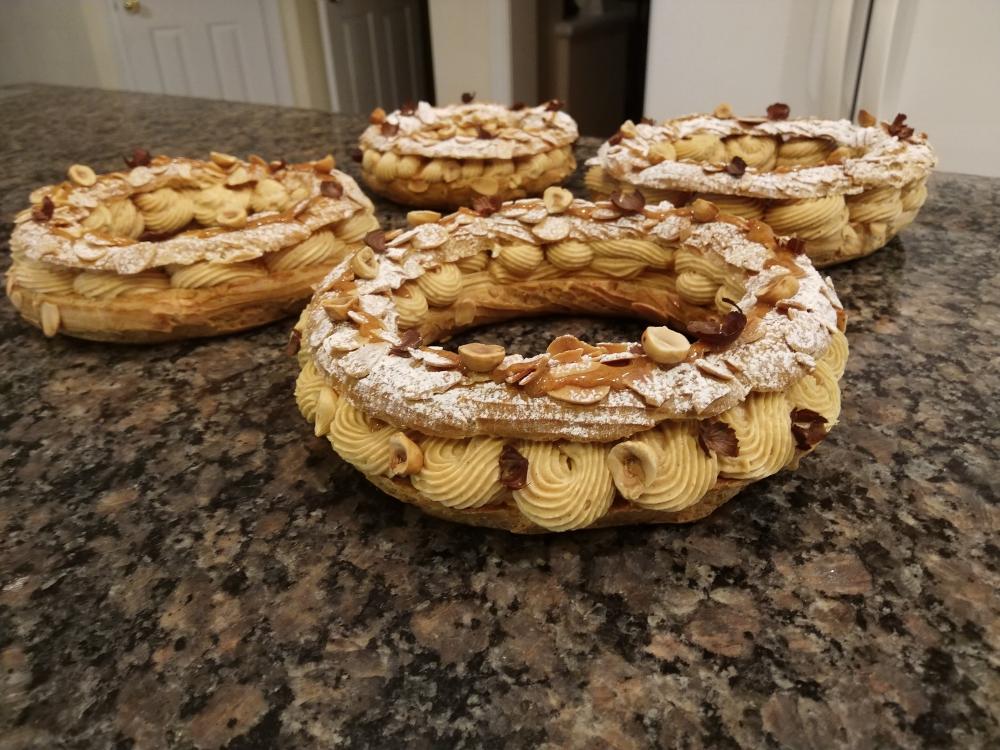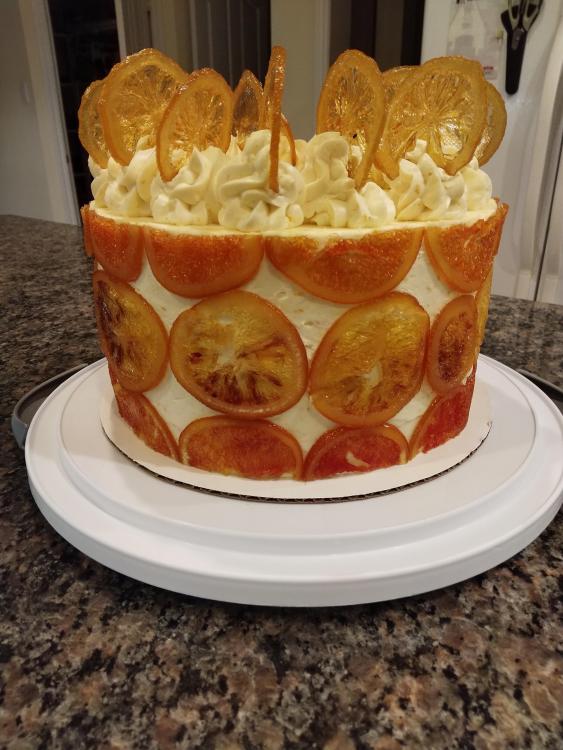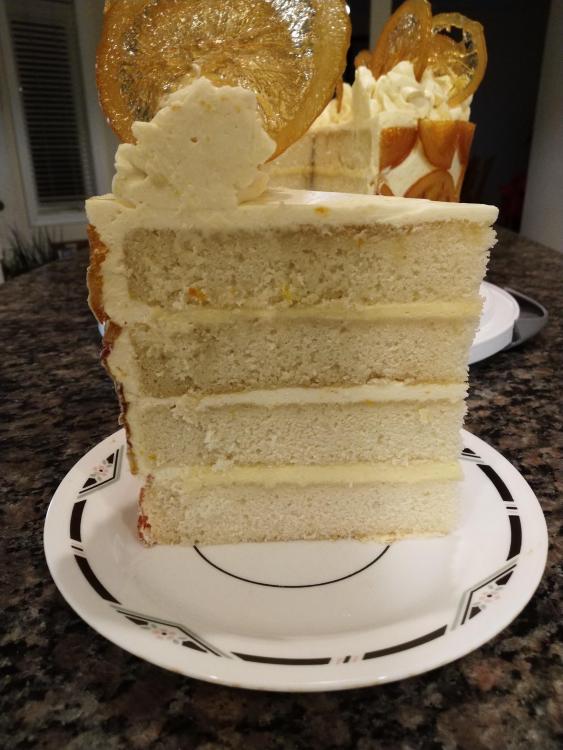
Cahoot
participating member-
Posts
59 -
Joined
-
Last visited
Recent Profile Visitors
1,879 profile views
-
I think using only flour makes for a denser pastry cream than only starch, so a combination is used for a texture that's somewhere in the middle. They aren't *entirely* substitutable though - cornstarch is a more powerful thickener than flour, so you don't need as much of it to get the same final thickness. Some people mention a more noticeable starchy taste with a flour-only pastry cream. Finally, starch-thickened pastry creams can't be frozen, as the starch will break down, but flour-only creams can be frozen.
-
Your Daily Sweets: What Are You Making and Baking? (2017 – )
Cahoot replied to a topic in Pastry & Baking
I've seen the Jacques Torres recipe come up frequently in discussions about the best chocolate chip cookie recipe. Do you find they live up to the hype? -
Your Daily Sweets: What Are You Making and Baking? (2017 – )
Cahoot replied to a topic in Pastry & Baking
Some cakes I've made recently. Tres leches cakes (sponge cake, white chocolate Chantilly, strawberries) Strawberry cake (vanilla cake, strawberry filling, rosewater buttercream) Chocolate caramel cake (yellow cake, caramel filling, chocolate buttercream) Pistachio rosewater cake (vanilla cake, rosewater ganache, pistachio buttercream) Papa cake with baby cake (chocolate cake, white chocolate cream cheese filling, chocolate buttercream) And some other pastries too. Strawberry tart (almond-pistachio cream, pastry cream, strawberries) Passion fruit tart (passion fruit cream, vanilla whipped ganache) Walnut tart Choux au craquelin (vanilla pastry cream, vanilla whipped ganache) Maple eclairs and choux Assorted sablés diamant (vanilla, lemon, chocolate) -
Your Daily Sweets: What Are You Making and Baking? (2017 – )
Cahoot replied to a topic in Pastry & Baking
@shain "Nothing fancy"?? Those look so good! I wish I could get that variety over here. -
@pastrygirl and @Kerry Beal makes sense, thanks for the explanations. And that was a very interesting thread to read, it's funny seeing everyone else from 10 years ago asking the same questions I'm asking today about that method!
-
A couple of general questions about the mixing process for the folks here. I know there's been discussion on the "Valrhona emulsion" method here, i.e., hot liquid is poured onto melted or partially-melted chocolate. What's the purpose of doing this instead of say, pouring boiling liquid onto unmelted chocolate? Is it just easier temperature control? I think I've seen it said that you want to keep the ganache between 35-40°C (95-104°F) while making it, so is the entire point just that it's easier when your ingredient starting temperatures are closer to that range? I know that Valrhona also recommend always finishing with a hand blender, but not sure if that's related to this point. Also, for whipped ganache recipes, there's always a portion of the cream that's left cold and added to the fully-emulsified ganache at the end. How do you decide how to divide the cream? I've seen some recipes where it's simply divided in half - half is heated, half is left cold. I've seen other chefs say that the weight of the cold cream should be equal to the weight of the initial ganache (hot cream + chocolate + any invert sugars used). Even other recipes don't seem to follow any specific ratios. Of course, it may depend on the total ratio of cream to chocolate used for the whipped ganache, but in general, does it really matter how the cream is divided?
-
Your Daily Sweets: What Are You Making and Baking? (2017 – )
Cahoot replied to a topic in Pastry & Baking
Apple turnovers. Happy with my progress on inverse puff pastry; it's far from perfect, but good enough for me! -
Your Daily Sweets: What Are You Making and Baking? (2017 – )
Cahoot replied to a topic in Pastry & Baking
-
Don't know how helpful this is, but Milk Bar makes their cereal milk by infusing toasted cornflakes in milk for 20 minutes, then straining but taking care to not push it through the sieve. Though I'm sure a soak and blend with the cream then straining, like mentioned by @jimb0 would work perfectly fine too and I imagine would extract more flavour.
-
Your Daily Sweets: What Are You Making and Baking? (2017 – )
Cahoot replied to a topic in Pastry & Baking
Still citrus season, so made a citrus cake. Didn't turn out quite how I pictured as I was hoping for more of a colour gradient from the candied citrus slices (used Navel, Cara Cara, and blood orange plus lemons), but their colours got quite dulled after candying. Oh well. With orange buttercream and lemon cream/curd. -
@jimb0 and @Kerry Beal thank you both for your suggestions! I didn't think about looking at brewing shops, but that is indeed very cheap. I also looked through my local bakery supply stores and found another store that I didn't know about which also sells it for a good price. No more being constrained by lack of availability of this ingredient anymore
-
I was just looking for something in the 1-2 kg range to last a comfortable amount of time. The 8.5 oz tubs would actually be fine if I didn't have to pay shipping, but with that it ends up being not worth it unless there are other items I also need from the store. I did see that Bulk Barn has it, but none of the stores close to me have had it stocked; shame since it would've been very convenient otherwise.
-
I live in Ottawa. I'm surprised to hear you and @jimb0 mention that you can find it pretty easily. The only place that I can find it for a good price is McCall's which has it in 1kg, 5k, and 11kg, but I only order from there infrequently when I need a lot of items from there to minimize shipping costs. Everywhere else I've been able to find glucose online only sells it in the smaller 321ml containers which are much less cost efficient.
-
Apologies if this was brought up before in case I missed it earlier in the thread. I know that invert liquid sugars are used to increase shelf life of ganache in bonbons by lowering the AW and also increase the smoothness too. However, I've also seen many ganache recipes not for bonbons (e.g. ganache montée, Namelaka cream) but for cakes and pastries that also use invert sugars, and it's often times an equal amount of glucose and Trimoline (e.g. 20g glucose + 20g Trimoline). In these applications increased shelf life from using invert sugars wouldn't matter, so what's their purpose? Is it just for a slightly smoother mouthfeel, or do they also affect the consistency or structure in other aspects? An example is this recipe. To add on to that, why do these recipes usually call for an equal amount of glucose and Trimoline? As far as I understand they'd both be fulfilling basically the same purpose (though I know they're not identical products, e.g. different water contents for one), so I wonder why those recipes can't be slightly reformulated to be simpler and just use one invert sugar. And as someone in Canada where it's hard to get glucose syrup as a home baker and basically impossible to get Trimoline, I'm also interested in how important they actually are to the recipe and what the effects would be if they were omitted or substituted - I've seen people substitute honey for Trimoline and corn syrup for glucose. And maybe the same answer to my first question will apply to this, but similarly many recipes for caramel also call for invert sugars too, added after the caramel is formed. To clarify, I don't mean invert sugars heated with the sugar to prevent it from crystallizing, but rather they're heated with the cream used for deglazing the caramel. An example is this recipe.
-
Your Daily Sweets: What Are You Making and Baking? (2017 – )
Cahoot replied to a topic in Pastry & Baking
Orange flavour was great - didn't have orange concentrate so I just boiled down a crap ton of orange juice instead for the pastry cream. Thanks for the inspiration!



